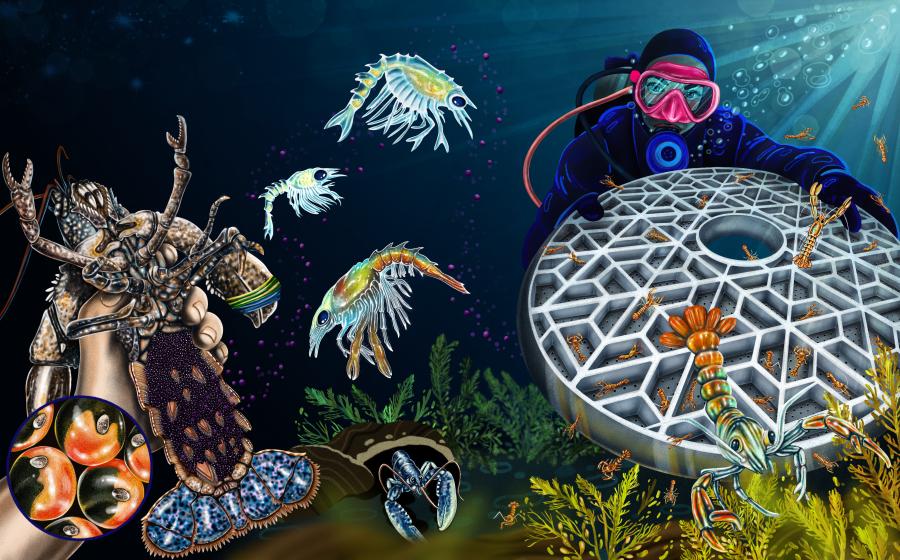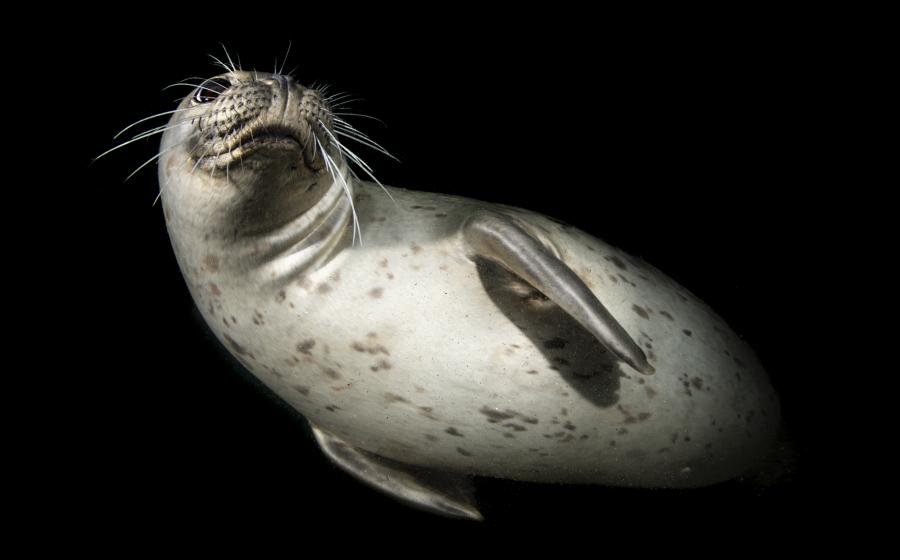Seeking a Lost Past in California's Waters
BRR BRR!
The screen I fell asleep to flashes as I fumble for the device.
“Dive?” says the group text. The Bub-ble Buds—a merry band of Monterey Bay dive-photo enthusiasts—have been summoned.
I leap out of bed as the responses pour in. “Where to?” “Need coffee, how’s 45 minutes?” “Anyone have an extra tank?”

Patrick WebsterDivers worship in the Kelp Kathedral in Carmel, California.
Regulator and BCD, wetsuit and fins, mask and computer and tank, camera, lens, housing, lights and memory card accompany me to the car. I’m on my way to collect another small sample of what the ocean looks like today.
A few streamed tunes later and we’re standing at the beach, watching ankle-slappers pour over themselves onto the sand, a beautiful brew of blue-green water. This is the time of year when our cacophonous choir of ocean conditions harmonizes into a symphony that makes for glorious dives. The days the old-timers tell us about with that knowing smile.
Gear goes on, the surface swim happens fast, then time stops. The visibility is infinite. The light is glowing, and the water is too. It is a pocket of perfection in the heart of a national marine sanctuary. Here, the ocean feels different. It looks different. Towers of old-growth giant kelp soar into the water column, painting the sea surface in a living carpet of stained glass. Small gaps in the golden canopy allow dancing sunbeams—“God rays”—to filter through and commune with the vibrant understory of algae, sponge and tunicate, crab, lingcod and nudibranch. On a day like today, there is no better diving in the world, at least not to us.
We swim, mesmerized, over the boulders, like all those divers that came here before us, before this place was protected, before it needed to be. Ancient anemones and urchins look on, their silence holding decades of collective memory, of then and now, before and since the bubble beasts began to visit their home.
When we look up into the algal rafters, we see our prayers have been answered. The local monastery of blue rockfish has filled in the piscine pews of a special sanctum—what we call the “Kelp Kathedral.” We raise our cameras to the heavens to document the beauty before us—all while knowing in the back of our minds, from conversations with our diving elders, that it was nearly lost.
We fill up our memory cards, digital and emotional, and swim back to shore. Hoots and hollers break the surface, smiles for miles on the drive home. Somewhere between the beach and computer screen, scanning the day’s images, a faint tide of melancholy begins to flow.
Intellectually, it’s difficult to reconcile how the most beautiful things you have ever experienced can be the worst they’ve ever been. How that glorious school of rockfish is, according to the data, a fishery-induced shadow of its former self. How the lush reef is in fact scarred by a marine-heat-wave-induced starfish die-off. Or how, with an ocean warming steadily since before you were born, the kelp forest that nourishes your soul is missing 90 percent of its historic groves.
Those fish tales of old, told by our mentors, instructors and guides—those stories that inspire each new generation to dive in—they’re data points too, emotional ones, in the human story of a changing ocean. It feels personal at times. There’s a sadness to knowing something once existed that you will never have a chance to see because it was bulldozed by momentum you weren’t around to push back against. But we are here now. And what we see is still beautiful, objectively so. “That’s down there?!” is still the reaction to our images, to our stories. And in those special places, on those special days that transcend generations, we get a glimpse into what was, and what could be again.
As underwater photographers, we document our adventures so that others will know what is out there, what is theirs too, so that they may help us hold on to it. We dive to balance the ledger, so that someone we’ll never meet can also be roused from their sleep, for a chance to experience the ocean of our dreams.









